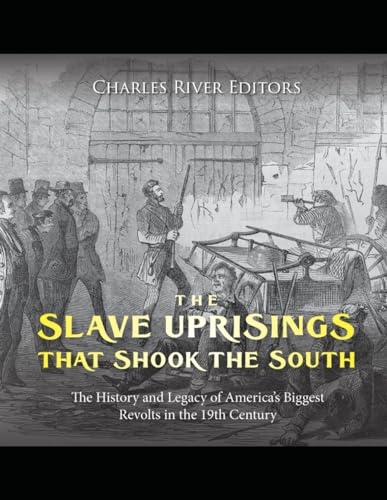Product desciption
The Slave Uprisings That Shook The South Charles River by Charles River 9798872250081, 8872250080, B0CQFQYZGS instant download after payment.
As the issue of slavery roiled the country, few people became as controversial or consequential as Nat Turner, who was one of millions of slaves in the South before the Civil War but ultimately led the nation's most notorious slave uprising. In August 1831, Turner led a rebellion that terrorized Virginia for several days, killing dozens of whites and freeing slaves as his band moved from plantation to plantation. The Richmond Enquirer reported, "A fanatic preacher by the name of Nat Turner (Gen. Nat Turner) who had been taught to read and write, and permitted to go about preaching in the country, was at the bottom of this infernal brigandage. He was artful, impudent and vindicative, without any cause or provocation, that could be assigned." Even after the uprising was put down, Turner evaded capture for a few months, and after he was captured, his "confessions" were taken down and published before he was executed. Virginia would put a total of 56 slaves to death for the uprising. The repercussions of Nat Turner's rebellion across the South cannot be overstated. The fear imposed by the uprising led states across the South to enforce even tougher codes on slaves; since Turner had been taught to read and write, states forbade slaves from being taught to read or assemble, and in the aftermath, whites also treated blacks even worse, with an estimated 200 blacks being killed in an outbreak of violence. But while Turner was demonized by whites and held out as a stereotype of what a typical slave might do if given the chance, he was lionized among other slaves and free blacks as providing an example "when the first should be last and the last should be first." The polarization helped harden opinions on both sides, paving the way for future events like John Brown's attempted rebellion at Harpers Ferry in 1859. While Turner's rebellion remains famous today, a far larger uprising took place a generation earlier. In January 1811, hundreds of slaves in Louisiana attempted to make a new beginning for themselves or die trying. Armed with muskets, cane knives, and axes, and wearing stolen United States militia uniforms, they set out to conquer the city of New Orleans. The goal was to establish a free republic where slavery was outlawed and blacks had control over their own lives. Understandably discontented with their status and no longer willing to accept it, they were ready to engage in extreme violence to win their freedom, fully aware that death would be the only alternative. The German Coast Uprising in 1811 was the largest act of armed resistance against slavery in American history, and more than 100 slaves died during or as a result of the German Coast Uprising, whereas fewer than 30 were killed in action or as punishment for Nat Turner's uprising. The 1811 insurrection also involved the largest mix of slave participants, combining African- and American-born slaves, and both men and women. The rebels of 1811 were inspired to a great degree by the most successful slave uprising in history, which had occurred the previous decade in the French colony of Saint Domingue (modern Haiti). There, thousands of enslaved workers there launched an organized rebellion, expelling all whites from the territory and establishing an independent state. After his activities in Kansas, John Brown spent the next few years raising money in New England, and in 1859 he began to set a new plan in motion that he hoped would create a full scale slave uprising in the South. Brown's plan relied on raiding Harpers Ferry, a strategically located armory in western Virginia that had been the main federal arms depot after the Revolution. Given its proximity to the South, Brown hoped to seize thousands of rifles and move them south, gathering slaves and swelling his numbers as he went. The slaves would then be armed and ready to help free more slaves, inevitably fighting Southern militias along the way.


